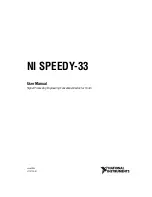SYNCHRONOUS SERIAL INTERFACE (SSI)
6 - 148
PORT C
MOTOROLA
6.4.7.4.1
On-Demand Mode – Continuous Clock
This special case will not generate a periodic frame sync. A frame sync pulse will be gen-
erated only when data is available to transmit (see Figure 6-82(a)). The frame sync signal
indicates the first time slot in the frame. The on-demand mode requires that the transmit
frame sync be internal (output) and the receive frame sync be external (input). Therefore,
for simplex operation, the synchronous mode could be used; however, for full-duplex op-
eration, the asynchronous mode must be used. Data transmission that is data driven is
enabled by writing data into TX. Although the SSI is double buffered, only one word can
be written to TX, even if the transmit shift register is empty. The receive and transmit in-
terrupts function as usual using TDE and RDF; however, transmit and receive underruns
are impossible for on-demand transmission and are disabled. This mode is useful for in-
terfacing to codecs requiring a continuous clock.
6.4.7.4.2
On-Demand Mode – Gated Clock
Gated clock mode (see Figure 6-82(b)) is defined for on-demand mode, but the gated
clock mode is considered a frame sync source; therefore, in gated clock mode, the trans-
mit clock must be internal (output) and the receive clock must be external (input). For on-
demand mode, with internal (output) synchronous gated clock, output clock is enabled for
DATA
DATA
SERIAL CLOCK
FRAME SYNC
(a) Continuous
SERIAL DATA
DATA CHANGES
DATA STABLE
SERIAL CLOCK
DATA
DATA
SERIAL DATA
(b) Gated
Figure 6-82 Clock Modes
F
re
e
sc
a
le
S
e
m
ic
o
n
d
u
c
to
r,
I
Freescale Semiconductor, Inc.
For More Information On This Product,
Go to: www.freescale.com
n
c
.
..


















